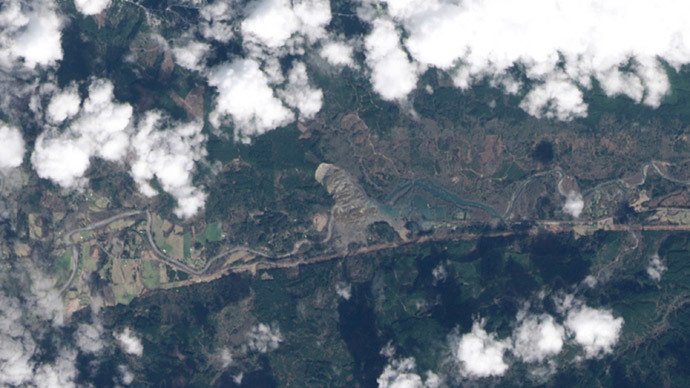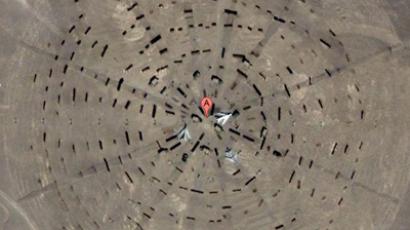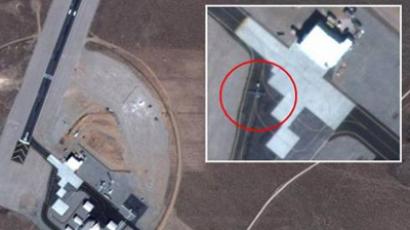Far more accurate satellite images on the way as US lifts restrictions

Satellite images have always been a bit fuzzy, thanks to the US government. But now the agency in charge is relaxing its rules, allowing mapping services like Google Maps or Bing Maps bring crystal clear pictures to their users.
DigitalGlobe, currently the only provider of commercial satellite imagery in the US, appealed to the Department of Commerce last year to lift its resolution restriction on satellite imagery that limited objects smaller than 50-centimeter (1.64 feet) from being shown in the photographs, Space News reported.
The US military and national security agencies insisted on the resolution cap in the 1990s, at the dawn of the commercial satellite imaging market, according to the Denver Business Journal. In April, the military, White House and Department of State indicated they were okay with loosening the restrictions, with the Commerce Department having the final word.
DigitalGlobe sells its images to Google for the company’s mapping service, but also provides satellite monitoring for mining and oil companies. Nongovernmental groups use crowdsourcing to analyze satellite images for conflict and human rights monitoring.
“It’s not just the technology, it’s the public’s ability to use the technology that’s important,” Corey Hinderstein, vice president of the international program at the Washington D.C.-based Nuclear Threat Initiative, said to the Business Journal. “This could continue to have a profound, positive benefit on the kind of work we do.”
The company will immediately be able to sell images with a resolution of 40 centimeters, but will be able to sell images of a more-detailed resolution of 25 centimeters within six months, when it launches its WorldView-3 satellite from Vandenberg Air Force base in August. That will allow users to go from being able to identify a car to being able to identify its make, Reuters reported.
"Our customers will immediately realize the benefits of this updated regulation, as for the first time, we will be able to make our very best imagery available to the commercial market,” Jeffrey R. Tarr, DigitalGlobe CEO, said in a statement. “As a result of this policy update and the forthcoming addition of WorldView-3 to our constellation, DigitalGlobe will further differentiate itself from foreign competition and expand our addressable market."
The company hopes to see a boost in its financials from the higher-resolution images, though the Motley Fool notes that shareholders shouldn’t expect new customers right away. “Sure, some will bite right away, but it'll take some time for DigitalGlobe to market its highest-resolution wares to its newest prospective clients,” Steve Symington wrote for the Fool.
DigitalGlobe will also be facing increased competition in the market, as the Commerce Department’s announcement came the same week that Google Inc. said it’s acquiring satellite company Skybox Imaging Inc. for $500 million.
Skybox has designed satellites to capture images and deliver them to customers with details down to less than a meter, and Google is working to bolster its mapping services and improve Internet access. It said the all-cash deal is subject to adjustments.
“Skybox’s satellites will help keep Google Maps accurate with up-to-date imagery,” Google said, according to Bloomberg. “Over time, we also hope that Skybox’s team and technology will be able to help improve Internet access and disaster relief.”
Aerial-imaging companies were previously able to provide higher-resolution images captured by aircraft, which can cost up to $100 to $300 per square kilometer, the Fool reported.
"In the past, collecting sub-50cm resolution required chartering and flying aircraft," DigitalGlobe said in a blog post. "This is expensive, time-consuming, and can be limited by denied airspace or dangerous conditions."
Google previously purchased Titan Aerospace, which has designed unmanned aerial systems capable of flying for five years at a time that Google suggested will be used to collect images from high above the planet, aiding initiatives like Google Earth and Google Maps.
Marc Dautlich, a lawyer from Pinsent Masons, told BBC that there
could be “repercussions” from people worried about their
privacy with the lifting of the resolution cap as well as
"national security considerations" that may need to be
addressed.
However, national security concerns still prevent satellite
imaging companies from selling photos of certain locations, such
as military bases. Those restrictions are unaffected by
Commerce’s new ruling, according to the Business Journal.














